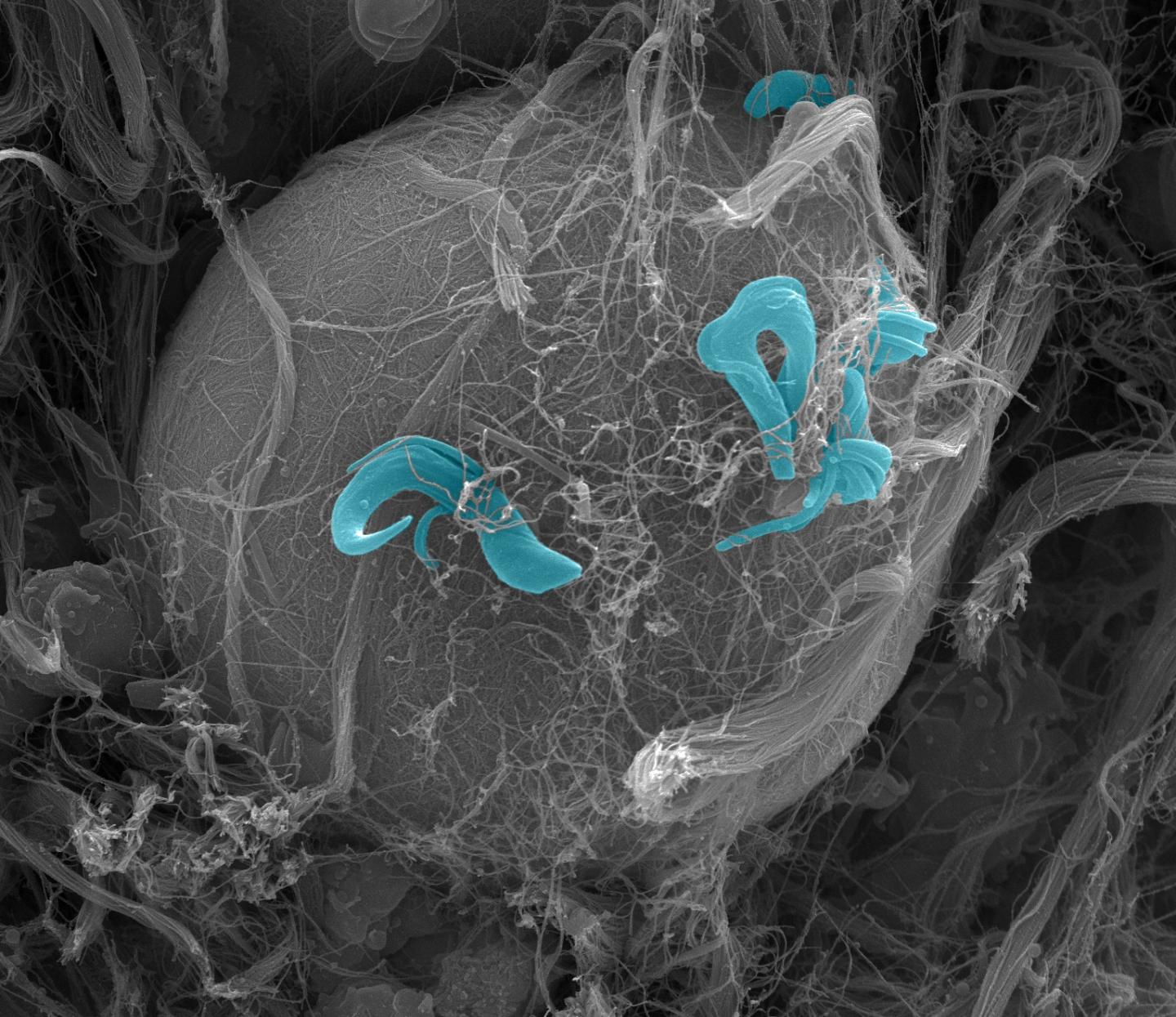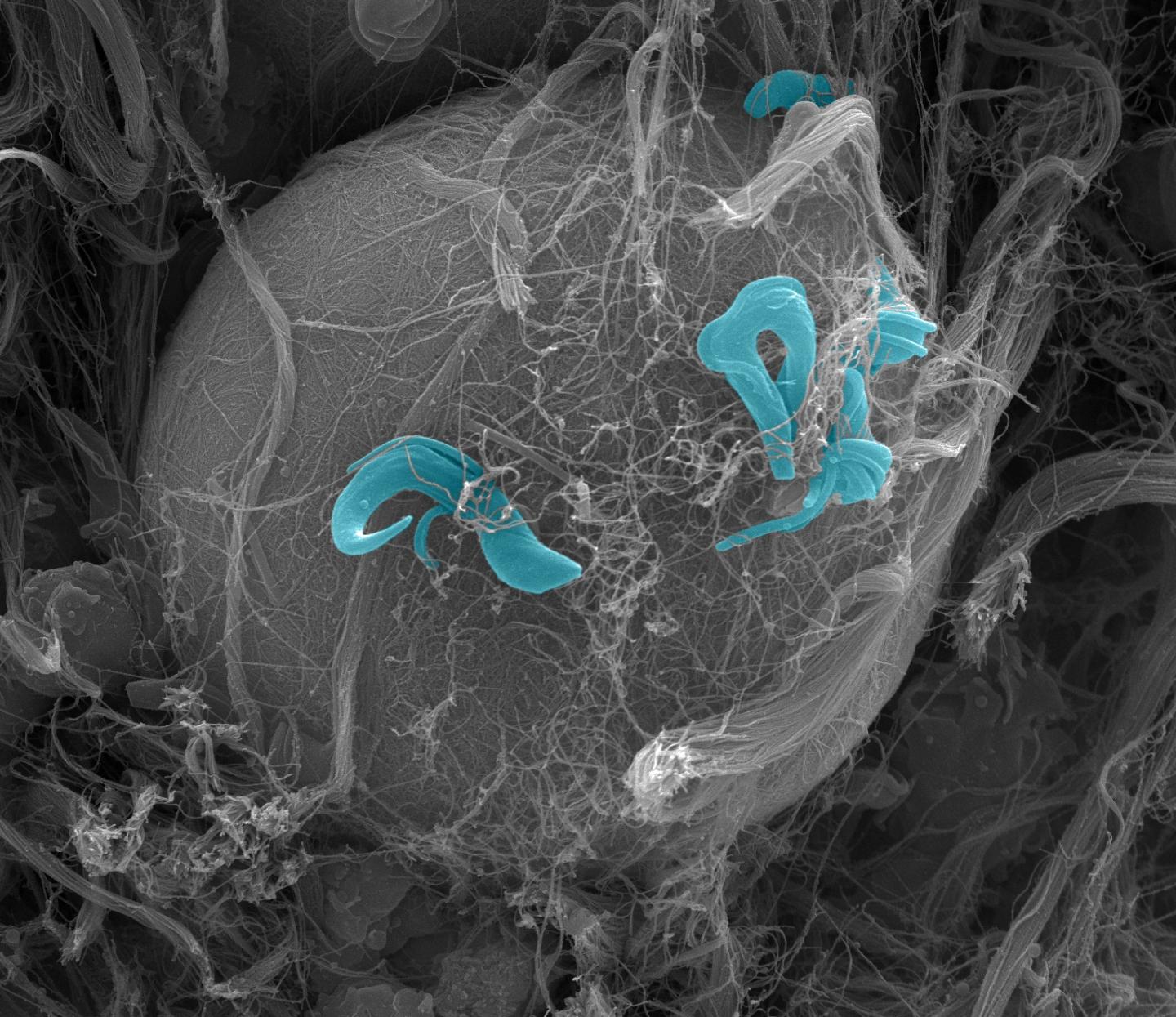
Trypanosome parasites cause sleeping sickness in Africa. If left untreated, the infection causes coma and eventually death. A study published on July 21st in PLOS Pathogens takes a close look at what happens after an infected tsetse fly transmits parasites into the skin of a mouse host and shows that very few parasites are needed to successfully colonize the host. In addition, multiplication of parasites at the bite site creates a reservoir from which parasites can be picked up by subsequent tsetse fly bites.
Trypanosome parasites have a complicated lifecycle that involves several different stages in both its mammalian and insect hosts. Many studies of pathogen-host interactions have involved needle injection of bloodstream-form parasites rather than the natural inoculation of so-called metacyclic trypanosomes by tsetse flies into the host skin.
In this study, Guy Caljon and Jan Van Den Abbeele, from the Institute of Tropical Medicine in Antwerp, together with colleagues describe an animal model which recapitulates the natural course of infection–an infected tsetse fly biting the ear of a mouse–and allows easy visualization of trypanosomes, because they are fluorescently tagged. By following the parasites over time, the researchers studied how they spread from the initial inoculation site and multiply in the mouse host.
They found that metacyclic trypanosomes are highly infectious–in their set-up, the dose that successfully infected 50% of exposed mice was just 7 metacyclic stage parasites. In comparison, even 200 bloodstream form parasites were unable to infect mice following injection into the skin at the ear.
The researchers also found that a subpopulation of parasites stays and actively multiplies in the skin around the initial inoculation site for at least 7 days after the infectious bite. When they honed in on the infection site using scanning electron microscopy, they saw a number of intricate interactions of parasites with local fat cells (called adipocytes) and collagen fibers.
Measuring the temperature at the injection-site ear several days after the fly bite, the researchers observed that it was elevated by more than one degree Celsius compared with the opposite ear, possibly because of local inflammation in response to actively growing parasites. When they offered starved tsetse flies the choice between mouse blood at the lower and the higher temperature, the flies showed a preference for the warmer blood.
Based on parasite densities present for at least a week following the initial bite and the induced temperature changes, the researchers speculated that parasite-free tsetse flies could get infected by taking a blood meal at the site. They were able to test this hypothesis, and found that, indeed, the fly hosts could pick up substantial parasite numbers from previously inoculated sites. However, when they checked the guts of the flies 7 days later, they were unable to find clear evidence that an infection in the fly host had been established.
Their study, the researchers conclude, "is the first to document in detail the presence of a residing intradermal trypanosome population at the tsetse biting site from which the host is systemically infected". They suggest that "these parasites may play a role as an early trypanosome reservoir in the mammalian host and could be picked up by the tsetse vector". "Further unraveling of the basis of the skin-resident trypanosome phenotype", they hope, "will shed new light on processes underlying host colonization and early parasite acquisition by the tsetse fly vector".
###
Contact:
Jan Van Den Abbeele, e-mail: [email protected], phone: +32(0)3.247.6262
Guy Caljon (now at Antwerp University), e-mail: [email protected], phone: +32.(0)3.265.2601
In your coverage please use this URL to provide access to the freely available article in PLOS Pathogens: http://dx.plos.org/10.1371/journal.ppat.1005744
Please contact [email protected] if you would like more information.
Funding: This work was funded by the Research Foundation–Flanders (G031312N), the InterUniversity Attraction Pole program P7/41 and an EU/FP7 ERC starting grant No.282312 (JVDA). NVR is supported by a fellowship of "Les Amis des Instituts Pasteur à Bruxelles". The CMMI is supported by the European Regional Development Fund and Wallonian government. The funders had no role in study design, data collection and analysis, decision to publish, or preparation of the manuscript.
Competing Interests: The authors have declared that no competing interests exist.
Citation: Caljon G, Van Reet N, De Trez C, Vermeersch M, Pérez-Morga D, Van Den Abbeele J (2016) The Dermis as a Delivery Site of Trypanosoma brucei for Tsetse Flies. PLoS Pathog 12(7): e1005744. doi:10.1371/journal.ppat.1005744
Media Contact
Jan Van Den Abbeele
[email protected]





